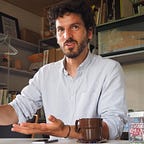[1/3] What I learned from visiting Fablabs & Makerspaces in Japan.
Last November and December, I had the opportunity to be able to work from Japan. So I went to visit and meet up with the Fab. scene in East Japan. As a matter of fact, even if most of the time I didn’t follow the protocol of making a proper appointment, I have to mention that I always have been happily welcomed. Often being invited for beer and dinner. Japanese Fab. people are really fabulous people.
Here is a list of the Fab. spaces I’ve visited and the team I’ve met : FabLab Shibuya, part of Co-Lab / &Fab, from Loft and MUJI stores, powered by FabLab Shibuya / Happy Printers / FabCafé Tokyo / Makers Base, avec Project Esin / Proto.Tokyo / Akiba DMM.Make / Fablab Kamakura / Fablab Kannai, Yokohama / FLAT, Fablab Sendai / Ferment, at Fujisawa SST / Lounge Fab Space — ラウンジFabスベース, operated by FabLab Shibuya.
And here is the FabMap Japan Youka Watanabe shared with me.
Similarities
To give you a rough feedbacks, I first wanted to share similarities I have noticed between the spaces I visited in Japan and the one I know in Paris region and elsewhere in France.
No stock, no trash. Or as little as possible.
Because space is scarce, filled up with machines, tools and still the need to gather and work with many people, there is always a struggle regarding material stock and wastes. In the majority of the spaces, the option followed was «come with your own material, go away with your trash». Except if wastes are interesting or the team wants to make something out of it.
In Japan, the link with recycling / up cycling networks was not yet developed — not that I know of — but the idea was interesting many space managers. On the other side, the link with material suppliers was built up by each spaces, and places like Makers Base did provide a database of interesting material producers to members only.
The display is more important than a shop, it helps the idea generation.
In all spaces, they had a wide list of projects realized and they needed to show all their productions. Most of the spaces would combine an online (matter needs to be touched) and an offline display, next to a workshop or designs shops. The display, more than a shop, enables to show ‘what is possible with the machines and the space’, which is an important aspect of how to help users to generate project ideas.
During the guided tour, spaces did display tiny experimentations for each machines, in order to show all the possibilities that the machines enable. Online, they run a blog, to share experimentations, and some of them did set up a shop, to make it easy to attend a workshop or purchase a CAD file.
In all spaces — like in the one I know in France — it remains complicated to propose a relevant database to share experiments and simultaneously entice users in a one-click project beginning. The visitor-to-customer ‘transformation’ still remains based on discussion with the makers space people.
Make users autonomous.
Machines training, visual how-to and instructions, creation processes, safety rules, insurances, terms&condition or looking rules, all these items were combined to make users autonomous. Maker spaces owners see autonomous users are less time consuming for them.
Time for projects and research versus time for income and consulting.
Maker spaces don’t exist without projects realized within them, but projects and R&D often don’t pay the bills. In most of the spaces, managers had to face the question what is the good trade-off in ‘time for projects and R&D’ versus ‘time for consulting or even fundraising’.
Each project is a specific case ; DMM corps funds DMM.Make, while Sendai Fablab had to look for new finances since the Sendai municipality is likely to stop financing them, or Proto.Tokyo positions itself as consulting business.
Local maker space versus makers platforms. Often was mentionned the question whether the value is in the platform or in the space itself. Space activities are extended thanks to platforms (OpenDesk, FabLabNetwork, …), but such platform doesn’t exist without local spaces. When the price of machines gets more and more affordable as time goes by and the market expands, will maker spaces be the internet café of yesterday ?
Maybe not, because maker spaces are not only about machines, but about people skills, community meetings, collaborative making. Platforms that will make the most out of machines + local people will bring the most value.
What matters the most are not space & machines, but good food & good music. As Youka Watanabe shared with me — as Jens Dyvik apparently once said — in Fablabs and MakerSpaces, machines don’t bring projects, people do. And people do so by discussing together and sharing ideas. Machines are just enablers, the Fab. community are the real makers.
Continue reading : [2/3] What I learned from visiting Fablabs & Makerspaces in Japan.
